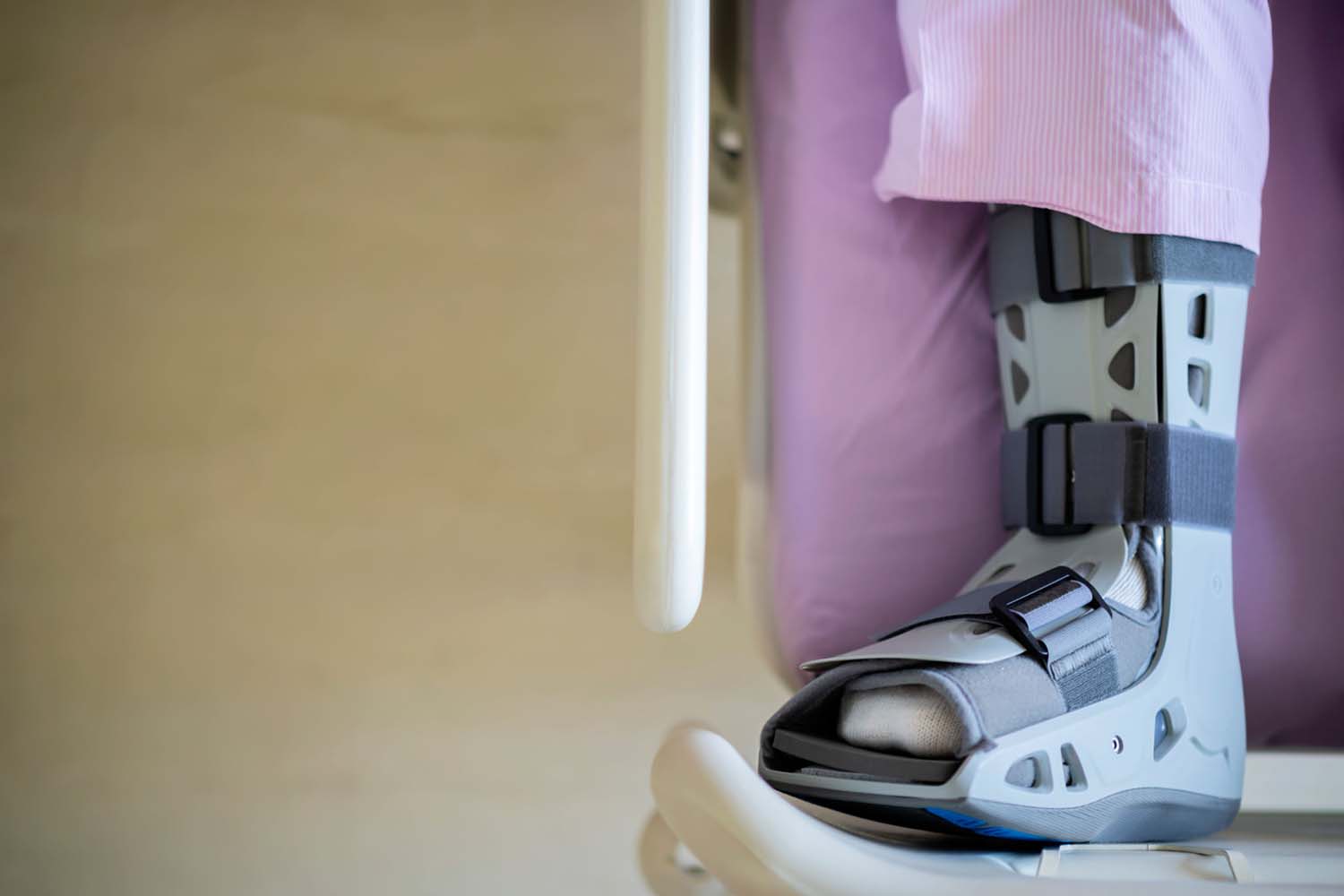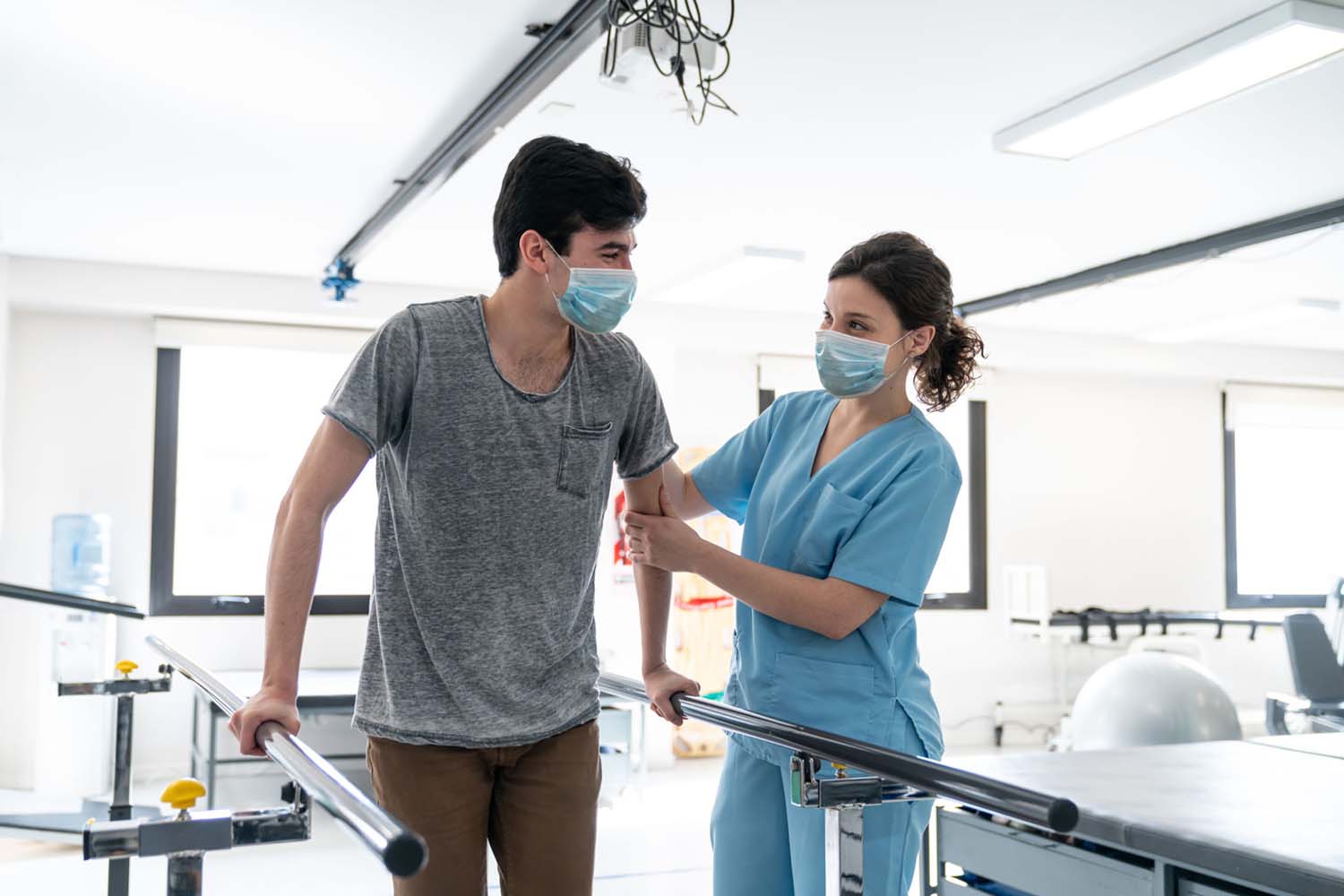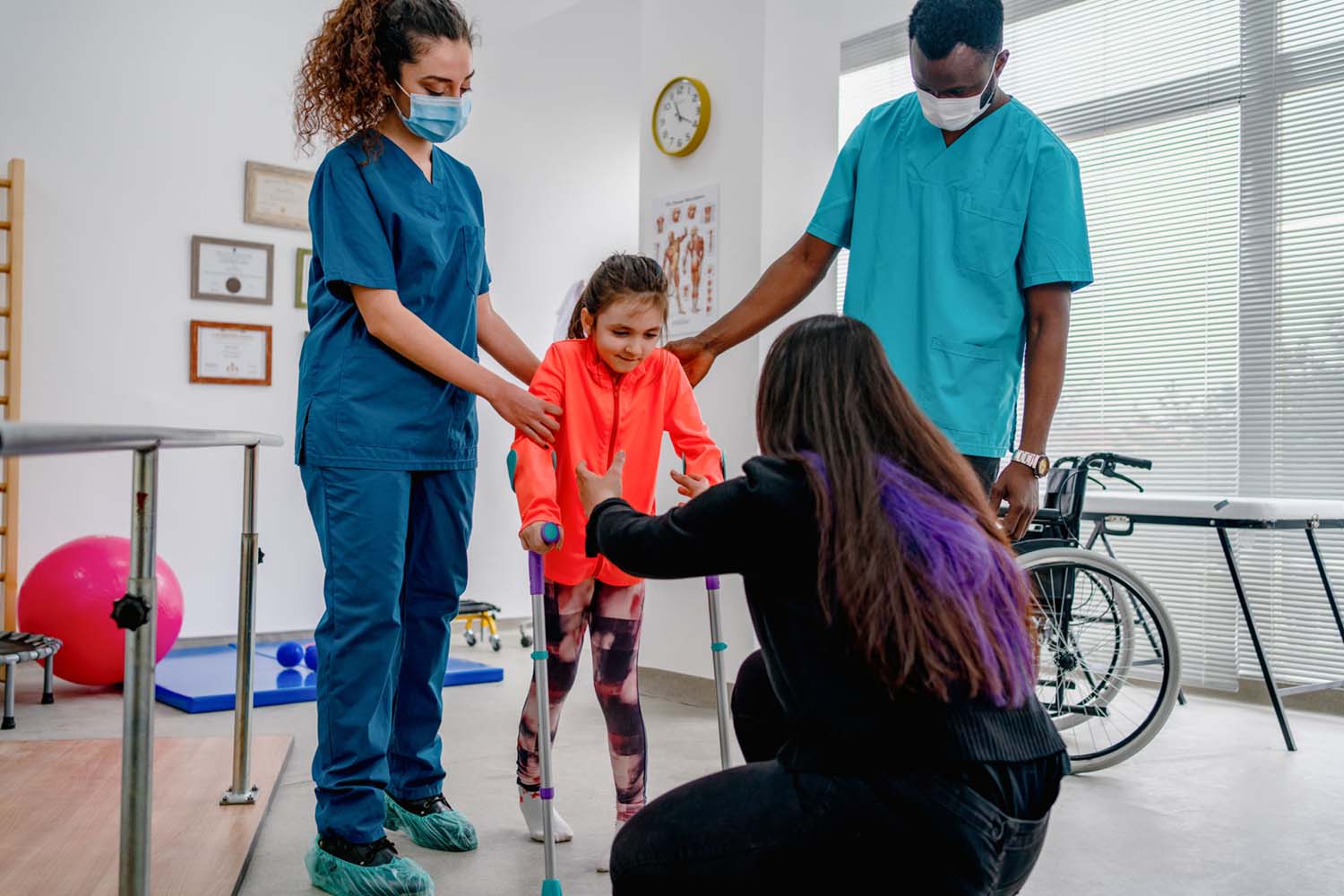Innovations in healthcare and medicine can be unique. An Ankle Foot Orthosis, or AFO, is a prime example. They are commonly recommended for individuals with ankle instability or weakness. AFOs are also prescribed as a treatment option for patients recovering from ankle fractures. Also, for those with a lower leg disability.
Over time, there have been some major advances in the development of AFOs. More materials and fewer components are now used. This has reduced the overall cost. It has also improved quality and increased the ease of use.

Ankle Foot Orthosis (AFO) Defined
The Ankle Foot Orthosis (AFO) is a brace made to hold the ankle and foot in proper alignment. It attaches via straps or elastic onto the leg and foot to keep the wearer standing correctly.
Medics use the AFO to treat various injuries and ailments. The most common purposes for AFOs are ankle sprains, trauma, and several orthopaedic conditions. A fracture, sprain or deformity usually causes the injury or condition.
A regular brace or cast is sufficient to correct the injury but is not enough to correct walk-related deficiencies that often lead to falls. The AFO helps with these deficiencies but also helps correct other lower extremity abnormalities.
Components of AFOs
AFOs usually have four parts:
— The “boot”, which is an air-filled bladder.
— A semi-rigid plastic frame called a “shell”.
— Straps called “lacing”.
— One or two “stay bars” that help secure the foot in the shell.
When a patient wears an AFO, it provides support to allow for safer walking and standing.

Who Should Wear Them?
Individuals with certain neurological conditions that affect the lower limbs wear AFOs. These conditions include cerebral palsy, spinal cord injury, stroke and traumatic brain injury. According to the American Academy of Orthotists and Prosthetists (AAOP), as many as 20% of amputees also wear AFOs.
— They estimate the AFO market to be worth $1 billion worldwide.
— Independent living facilities such as Vivante Living and other retirement communities have high levels of AFO purchases, making them an important customer segment for these devices.
Are there benefits for Ankle Foot Orthosis (AFO)?
Increased mobility
Soft, lightweight boots give patients greater flexibility and improved fit. Lightweight, breathable materials allow patients to be more active. Patient comfort is also improved due to a softer inner liner and new straps with Velcro adjusters rather than laces or buckles.
Improved safety
The new materials allow for improved patient compliance. In addition, reducing the number of components provides fewer mechanisms to break, wear out or come loose. Therefore, AFOs are safer for patients than traditional models.
Improved infection control
Fewer parts make it easier to clean and disinfect an AFO for each patient. Wearing an AFO that fits properly also eliminates material build-up at the ankle and reduces friction, which may lead to blisters or calluses forming on the skin.

Lower cost per patient
Companies make traditional AFOs from metal components and leather/rubber straps, which increases overall production costs. However, many producers now make the new generation of AFOs with less costly plastic and flat straps, reducing the overall expense by 50%. As a result of the lower cost per patient, health care facilities will be able to treat more patients and help more seniors walk again.
Ankle Foot Orthoses (AFOs) support the foot and ankle to provide the patient with a normal gait and balance capabilities. However, due to the high cost of traditional AFOs, some patients have to forgo treatment and experience a limited range of motion in their joints. This encompasses several conditions, including Parkinson’s disease, multiple sclerosis, cerebral palsy, stroke, amputation and arthritis.
Decreased Healthcare Costs
Lightweight boots improve patient compliance and reduce the risk of costly falls, which is especially important for our growing elderly population. In addition, there is a reduction in pressure sores for patients who are more active and able to be more mobile throughout the day, resulting in fewer patient readmissions.
The cost of AFOs can range from $300—$1,000 per pair. Be sure to talk with your foot or ankle surgeon to determine if a lightweight boot is right for you.
Fewer pressure ulcers
It prevents the foot from twisting, but it also takes the pressure off the Achilles tendon, preventing painful pressure ulcers that can occur due to excessive rubbing and friction. In addition, the new design of the boot reduces pressure on vulnerable areas. Soft, breathable padding keeps the foot from getting too hot. A rubber sole adds traction and protects against slips and falls, reducing the likelihood of a pressure ulcer.
Updated AFOs offer benefits for patients who are living independently and those living in assisted living facilities or nursing homes. An AFO can help prevent falls, increase mobility and reduce the risk of injury or death—especially for seniors who have multiple medical issues. Unfortunately, falls are also one of the leading causes of serious injury in long-term care environments.
Faster patient throughput in clinic
For those coping with neurological disorders, searching for a therapeutic boot is often long and frustrating. Current boots offer poor foot support and are heavy and difficult to don, resulting in lengthy fittings, delays in treatment and reduced patient compliance.
The new AFO has been developed with the patient in mind. Clinics can provide better service by offering a comfortable, therapeutic boot. The five-minute fitting process means quicker patient throughput in the clinic. The boots are made of a soft neoprene material, which is easy to wear. Available in three sizes, they can also be trimmed to fit the smallest foot size and strapped to fit the largest.
Decreased patient compliance
The new design also includes an easy-to-use adjustable Velcro strap that allows clinicians to quickly adjust the product and achieve a comfortable fit with no metal fasteners that can irritate the skin or collect debris. The streamlined design also features a removable shoe that allows for quick cleaning, which is a significant improvement over traditional AFO designs that are difficult to clean and may require a week’s worth of treatment time to dry.








